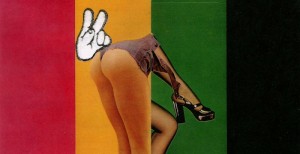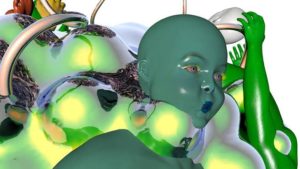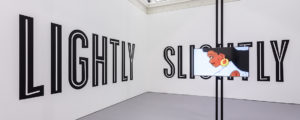It’s been a long, long wait. Since their emergence in 2009, Factory Floor never ceased to be perceived as the ‘next big thing’; their famously thrilling live performances and subsequent releases, marking a shift from a Joy Division-influenced, typically post-punk act into a ruthless, noise-dance machine, while making a long-overdue debut album one of the most anticipated releases of 2013. Now, as it finally drops, the self-titled collection seems, paradoxically, both satisfying and sub-standard in equal measure.
Nik Colk Void’s collaboration with Chris Carter and Cosey Fanni Tutti, which resulted in the long, dense, primal industrialism of Transverse, certainly had a strong, beneficial influence on the shaping of Factory Floor: the shift from average-but-hyped indie post-punk to a more singular sound now complete. First impressions place the LP alongside the dancefloor-as-ritual tendencies of the 1980s: Psychic TV, Liquid Liquid, 23 Skidoo – where machine trance chants meet a contagious funk nerve, or even echo the disorientating, malign disco of 20 Jazz Funk Greats. Nearly all the songs unite repetitive, condensed rhythms with pushed-back, detached, mantra-like vocals, instantly bringing to mind Cosey’s mannerisms. Another factor, which seems to have moulded the band’s current shape is their label; the mark of manic punk-funk, DFA‘s early signature sound, is clearly audible here – but it’s a new, modernised version, in which the New York hip-ness of The Juan Maclean or LCD Soundsystem is replaced with mechanical, Ballardian cyberfunk. ‘How You Say’, or album opener ‘Turn It Up’ are updated versions of the DFA template circa-2004, but with all traces of rock provenance surgically removed.
These aspects make Factory Floor an interesting, albeit derivative, production. Instead of establishing a new quality, the LP serves as a concluding chapter, dotting the ‘i’s and crossing the ‘t’s of contemporary dance-punk history. It’s also likely that it’s still the best record of the entire genre – the most definitive, well-considered example. Yet, what Factory Floor have lost on the way is a more daring mode of expression. They’re by no means a characterless formation, and have proved that they can develop their own unique language – most distinctly in the ‘Second Way’ version of Two Different Ways (2011), across which they refreshingly incorporated elements of acid house and obscure, late-80s New Beat. Sadly, this route wasn’t the one the band elected to follow; instead, as in ‘Work Out’ or ‘Fall Back’, they edge dangerously close to electroclash, thankfully putting the genre’s parodist tendencies aside.
While their LP was eagerly awaited, it’s worth remembering that Factory Floor are just one of the bands merging a post-punk edge with abrasive synths that have appeared in recent years. This is a more adventurous, less fashion-conscious incarnation of new wave influences than its guitar-led predecessors (helmed by Interpol). If the new-new wave of the mid-2000s was driven by a love for Joy Division, then the next one definitely prefers New Order. The unabashed electro-Goth fascinations of Light Asylum, the experimental weirdness of S.C.U.M., the dejected minimal wave of Led Er Est or the claustrophobic, swooning sound of HTRK heralded the intriguing sub-genre of ‘new severity’, serious music to dance and feel depressed to.
When faced with the task of creating a whole album, most of the above (with the exception of HTRK), simply didn’t deliver. Perhaps it’s a sign of the times: thriving in short forms, astonishing on EPs and singles, bands tend to lose it across the increasingly outmoded format of the LP. Light Asylum, who developed a promising chimera of New York-meets-Wave Gotik Treffen on their smaller releases, revealed a disappointingly mild, conservative face on their full-length debut. Led Er Est remain a stylistically undecided band: they’re capable of producing tracks filled with splendid resignation (such as the unmatched ‘Port Isabel’), but each of them disappears among a crowd of generic post-punk/minimal wave fare.
In this sense, Factory Floor remain a noble exception – a band who have proven that they can determinedly follow their chosen course and create a stylistically coherent LP without incidental tracks. As a predictable guitar sound seems to prevail again in 2013, whether in the form of the Siouxsie-esque Savages or the gloomy, overly prolix The Cure heirs Tropic of Cancer, ‘Factory Floor’, with its rigidity and earnestness, serves as an icy, angular counterweight. **
Factory Floor’s self-titled album was released on DFA, September 6, 2013.




















